Surgical management of Bony Bankart lesions has evolved to deliver stable, reliable outcomes for patients with shoulder instability. Understanding post‑operative results helps patients and surgeons set realistic expectations and plan for long‑term shoulder health. This guide reviews success rates, recurrence risks, and functional outcomes based on current evidence.
1. Success Rates After Bony Bankart Repair
Arthroscopic Repair Outcomes
- Stability Restoration: Reported success rates range from 85% to 95% in patients with minimal to moderate bone loss.
- Return to Sport: Most patients resume their previous level of athletic activity within 4–6 months, depending on sport intensity.
- Functional Scores: Significant improvement in validated shoulder outcome measures (e.g., Rowe, Constant, and ASES scores).
Open or Latarjet Procedures
- For critical bone loss (>20–25%), Latarjet procedures show excellent stability outcomes, with recurrence rates often under 5%.
- High satisfaction and durability reported in long‑term follow‑ups (10+ years).
2. Recurrence and Risk Factors
Recurrence Rates
- Low bone loss (<13–15%): Recurrence is uncommon (5–10%) when repair is performed properly.
- Moderate bone loss (13–20%): Slightly higher recurrence, influenced by activity level and compliance with rehab.
- Critical bone loss (>20–25%): Soft‑tissue repair alone has high failure rates; bony augmentation is recommended.
Risk Factors for Failure
- Young, high‑demand athletes in collision sports.
- Noncompliance with post‑operative rehabilitation.
- Missed associated lesions (e.g., engaging Hill–Sachs).
3. Long‑Term Shoulder Function
Range of Motion
- Most patients regain near‑normal ROM by 6 months post‑op.
- Some mild external rotation deficits can occur, particularly after open procedures.
Strength and Stability
- Rotator cuff and scapular strength typically return to baseline or better with structured rehab.
- Latarjet procedures may slightly alter biomechanics but provide robust stability.
Patient Satisfaction
- High satisfaction correlates with thorough preoperative planning and adherence to rehab protocols.
- Many patients report improved confidence in shoulder stability during sport and daily activities.
4. Return‑to‑Sport Guidelines
- Non‑contact sports: Typically around 4–5 months post‑op with successful strength testing.
- Contact or overhead sports: Usually delayed to 6 months or longer, based on functional assessments.
- Surgeon clearance: A combination of clinical examination, strength symmetry, and functional drills guides return timing.
5. Long‑Term Prognosis
Durability of Repairs
- Studies demonstrate maintained stability 10–15 years after surgery in the majority of patients.
- Arthritic changes are rare but may appear in cases with significant preoperative damage or repeated dislocations.
Revision Surgery Rates
- Low with appropriate initial procedure selection.
- Revisions may be necessary for untreated bone loss, recurrent trauma, or technical failures.
FAQs
1. What is the typical success rate after arthroscopic Bony Bankart repair?
Success rates range between 85% and 95% for patients with minimal to moderate bone loss.
2. Can instability return years after surgery?
Yes, but recurrence rates are low when proper surgical techniques and post‑op care are followed.
3. Does the Latarjet procedure limit motion?
Slight loss of external rotation may occur, but most patients experience excellent overall function.
4. How soon can athletes return to play after surgery?
Most non‑contact athletes return in about 4–5 months; contact athletes may require 6 months or more.
5. Will my shoulder feel completely normal after recovery?
Many patients report full return of function and confidence, though minor stiffness or residual symptoms can occasionally persist.
Post‑operative outcomes for Bony Bankart lesions are overwhelmingly positive when surgical selection, technique, and rehabilitation are carefully managed. With high success rates, low recurrence risk, and strong long‑term function, most patients can expect a stable and capable shoulder that supports their active lifestyle for years to come.
